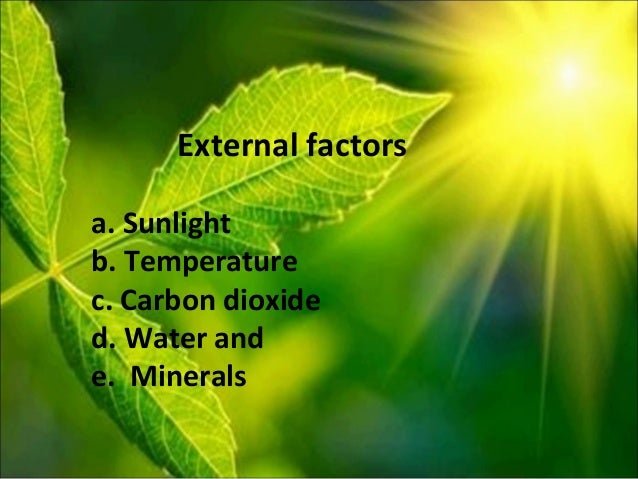
The discussion will give exposure to the factors that influence the growth and development of plants. Factors are divided into two things, namely internal factors and external factors.
Internal factors consist of heredity, enzymes, and hormones. Meanwhile, external factors, consisting of light intensity, water adequacy, temperature, and minerals.
Both of these factors, namely internal and external control of growth and development, among others through the control of internal activities. Such internal activity is the process of photosynthesis, respiration, synthesis, protein, chlorophyll synthesis, osmotic pressure, and mitosis.
The explanation of each factor, starting from internal factors, as follows.

1). Enzyme. It is a protein or macromolecule that speeds up a chemical reaction in the body of a living being.
Enzymes are unable to react. The enzyme serves to decrease the activation energy in each reaction that occurs. The presence of this enzyme, causing the energy required in each reaction to be lower.
Enzymes work on substrate, pH, and certain temperatures. If the environmental conditions consisting of pH and temperature are appropriate, then the enzyme released will work with high activity, so that the plant can grow optimally.
Plants regulate the enzyme's own work. It is intended that a compound produced is not continuously in shape. The arrangement is made through the formation of an inhibitory enzyme or inhibitor.
The above conditions is a regulatory system to maintain physiological balance in the body. Reaction sequences can not take place, if they involve only one type of enzyme. However, it requires several regularly patterned enzymes in the system.
Differences in gene types cause different growth responses to the same environmental conditions.
2). Growing hormones or growth regulators. These substances are auxin, ethylene, gibberellin, cytokines, and acid abscisate.
Auksin, discovered by F.W Went, 1928. In plants, this hormone serves to influence cell elongation, cell division, and cell differentiation; stretching cambium activity and formation of phloem and xylem vessels.
Then, it plays a role to nourish the cell wall in order to elastic and stimulate its formation, but does not stimulate the formation of secondary cell wall. In addition, inhibits the loss of young fruit and leaves fall.
Furthermore, auxins play a role for root formation and retain the properties of stem geotropism; stimulate the formation of the relationship. Finally, it plays a role for seedless fertilization.
Ethylene. This hormone is a gas that serves to inhibit the development of roots. Then, inhibit the formation of flowers; improve fruit ripening process. And lastly, to stimulate the occurrence of epinations or leaves that grow curled.
Giberelin, serves to stimulate the growth of stems and leaves; at high concentrations capable of stimulating root formation. Then, eliminate the genetic dwarf properties of plants.
Furthermore, it serves to stimulate the formation of flowers in flowering plants, if the duration of lighting is more than 12 hours. Stimulates cell division and elongation.
Cytokinin, discovered by Foolke Skoog, 1954. Cytokinin serves to stimulate cell division and prolongation of the growing point; stimulating stem and root enlargement as well as forming branch roots.
Then, cytokinin serves to stimulate shoot formation and the end of seed dormancy. Stimulate the growth and development of embryos. Inhibiting leaf aging and stimulating protein synthesis and RNA to synthesize other substances.
Abscisic acid, this serves to accelerate the process of leaf aging and the occurrence of fall leaves.
Second, the explanation related to external factors, namely as follows.

1). Nutrition Or Food. Living things need food for energy sources. This nutrient consists of micro and macro elements.
Makronutrein is a required element in large quantities, including oxygen, carbon, hydrogen, nitrogen, sulfur, phosphorus, potassium, and magnesium.
Micronutrein is a required element in small amounts, consisting of iron, chlorine, copper, magnesium, zinc, molybdumum, boron, and nickel.
Fertilization is one way to add the nutrients needed by plants. Fertilization is done so that plants do not experience deficiency. Deficiency is a condition in which plants experience deficiency of macronutrein or micronutrein.
2). Light. The light that plays a role in the process of photosynthesis is called visible light. The visible light, which is red, blue, indigo, and violet.
Then, infrared light acts to determine the ambient temperature. The result of the photosynthesis process is used for growth and other life activities. Light can turn leukoplasts into chloroplasts.
3). Temperature. Temperature affects plants, since they are related to enzyme activity and water content in plants. Termoperiodism is a condition in which the growth of a plant species is affected by temperature differences during the day and night.
4). Water. Water is an important compound for plants. That works for the chemical reaction medium in the cell, supporting the process of photosynthesis, and keeping moisture.
The water content in the soil functions for the nutrient solvent. It is intended to be easily absorbed by plants. Water also maintains soil temperatures that play a role in the growth process.
5). pH. The degree of soil acidity has an effect on the availability of nutrients needed by plants. Neutral pH requires elements, such as Ca, Mg, P, and K. acidic soil pH, available elements such as Al, Mo, and Zn. These minerals are poisoning plants.
6). Oxygen. The oxygen levels in the soil are opposite to the moisture content in the soil. The presence of oxygen is involved in the process of respiration of root cells. It will be related to nutrient absorption or active transport.
Thank You For Reading.
Steemit.com/@jesica

